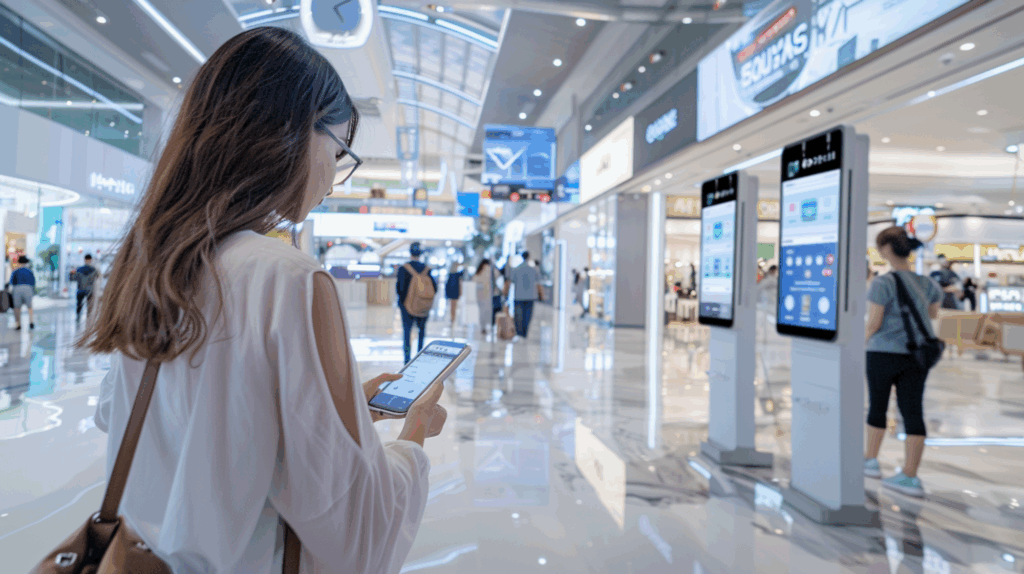
Queues are the silent frustration that every customer has encountered at some point. Whether waiting for a table at a restaurant, standing in line at a retail store, or even waiting for your turn at an auto service center, the experience can be stressful and annoying. However, with the rise of virtual queues, businesses now have an effective way to manage customer flow and reduce that all-too-common frustration.
The Problem with Physical Queues
Physical queues are standard in many establishments, but they have their challenges. Customers often feel like they’re wasting time, which leads to frustration. The negative experience can impact the overall perception of your service, making it less likely that customers will return.
One of the biggest issues with physical queues is the lack of communication. Customers waiting in line are often left in the dark, with no idea how long they’ll have to wait, which only worsens their frustration. Hence, businesses must find ways to keep customers informed and manage their expectations to improve their perceived wait time and overall experience.
How Virtual Queueing Improves Customer Flow
Virtual queues ease the queuing process and improve patrons’ experiences. They allow customers to check in online, receive updates about their place in line, and even continue shopping or enjoying their day without being physically tied to a specific location. This reduces customer wait times and keeps them engaged and informed throughout.
Virtual queue management software can help businesses avoid long lines and crowded waiting areas by more effectively managing customer flows, making the environment more pleasant. These systems can also collect and analyze customer data, providing insights into peak hours, customer preferences, and service delivery. By adopting a digital queue management system, businesses can improve operational efficiency, reduce wait times, and deliver an enhanced customer experience.
Benefits of Virtual Queue Management Systems
Virtual queue management systems offer several advantages for businesses looking to improve their customer experience. Here are a few key benefits:
- Reduced wait times: Virtual queues reduce the time customers wait in line, creating a more positive queuing experience.
- Improved customer satisfaction: Virtual queueing systems enhance customer satisfaction by providing real-time updates and managing expectations.
- Increased operational efficiency: These systems can help businesses manage their resources more effectively, leading to cost savings and improved staff performance.
- Better customer flow: A virtual queue management solution can help businesses ensure a smoother flow of customers, avoid bottlenecks, and improve service delivery.
Implementing Virtual Queueing Systems

Transitioning from physical to virtual queueing systems might seem daunting for businesses, but the benefits far outweigh the initial effort. A well-implemented virtual queue management solution can transform the waiting experience from a pain point into a positive touchpoint.
Start by assessing your current queuing process and identifying areas where virtual queueing could impact your process. Consider factors like peak hours, customer touchpoints, and your establishment’s physical layout. From there, you can incorporate queue management software that meets your business goals and enhances customer satisfaction.
Keeping Customers Informed
One of the most important aspects of virtual queueing is keeping customers informed throughout their wait. A well-informed customer is a happy customer. By providing real-time updates and accurate wait time predictions, businesses can keep customers engaged and reduce perceived waiting time.
Incorporating digital signage, QR codes, and mobile notifications ensures customers are always in the loop and aware of their place in the queue. This level of communication is crucial in maintaining customer satisfaction and ensuring a smooth queuing process.
Enhancing the Waiting Experience
Virtual queueing isn’t just about reducing wait times but improving the entire waiting experience. By allowing customers to check in online and receive updates on their smartphones, businesses can free them from the constraints of a physical queue. This gives customers the freedom to do what they want while they wait, whether it’s continuing to shop, grabbing a coffee, or simply relaxing.
Moreover, virtual queueing systems can be fully integrated with customer relationship management tools, providing businesses with insights into customer journeys, wait times, and service delivery.
As customer expectations continuously change, businesses must adapt to these needs. Virtual queueing can be expected to become even more sophisticated with technologies like machine learning and real-time data analysis. These advancements will allow businesses to predict customer behavior, optimize real-time queue management, and provide a truly personalized waiting experience.
Virtual Queuing with Chatbots and AI
Virtual queueing can be combined with chatbots and AI-powered customer service technologies to provide a more efficient and personalized customer experience. Chatbots can manage the virtual queuing process, offering real-time updates on wait times and providing notifications when it’s the customer’s turn to be served. Algorithms can optimize queue capacity and predict demand based on customer behavior, delivering a smooth flow and minimizing long waits.
Embrace Virtual Queueing for a Smoother Customer Experience

Virtual queueing offers a practical solution to the age-old problem of physical queues. By adopting a virtual queue management system, businesses can manage customer flow more effectively, reduce wait times, and improve customer satisfaction. The result is a better customer waiting experience and a more efficient business operation. So, whether you’re a retail establishment, healthcare facility, government office, or any other service provider, embracing virtual queueing is a step towards a more modern and customer-friendly operation.

